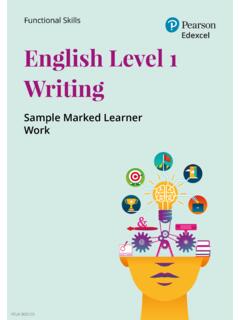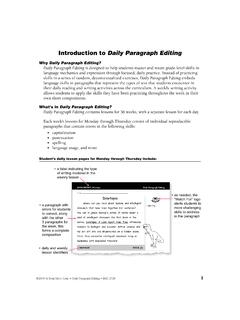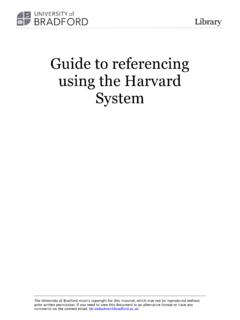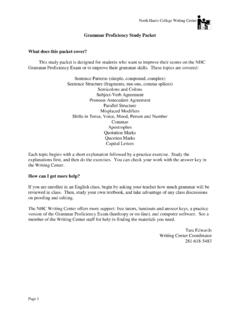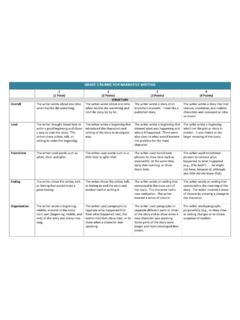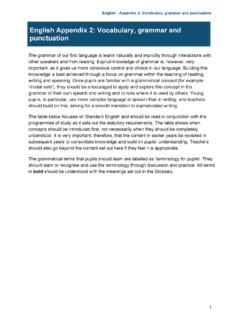Transcription of 236-29: Building and Using User Defined Formats
1 1 Paper 236-29 Building and Using User Defined FormatsArthur L. CarpenterCalifornia Occidental ConsultantsABSTRACTF ormats are powerful tools within the SAS System. They can be used to change how information is brought into SAS, how itis displayed, and can even be used to reshape the data itself. The Base SAS product comes with a great many predefinedformats and it is even possible for you to create your own specialized paper will very briefly review the use of Formats in general and will then cover a number of aspects dealing with usergenerated Formats . Since Formats themselves have a number of uses that are not at first apparent to the new user, we will alsolook at some of the broader application of Formats .
2 Topics include; Building Formats from data sets, Using picture Formats ,transformations Using Formats , value translations, and Using Formats to perform table , informat PROC format , picture format , format libraryINTRODUCTIONF ormats are used to map one value into another. For instance Formats are used extensively with SAS dates, which are storedas the number of days since the beginning of time (January 1, 1060). Since neither you nor your boss would like to see thedate displayed as 16,014 (November 5, 2003), SAS has provided us with a number of conversion tools that allow us to storethe date as a number while displaying it as a text string that we will recognize. These tools that change how the value isdisplayed are Formats .
3 There are literally dozens of Formats that SAS has created for handling dates alone. Although there are a great many formatsalready created it is not unusual to have a need to create a specialty format . This can be done with PROC format andthere is a great deal of flexibility as to how the format is created and what it can do for can also be used for more than the displaying data. Formats can be combined with DATA step functions to provide ameans to do data conversions and even table look-ups. Formats are powerful and flexible. A good understanding of the use of Formats is very important to a well rounded are two general classes of Formats ( format and INFORMAT). Informats are used when reading in data and formatsare used to write out values.
4 Most of the discussion in this presentation applies equally to both types and a distinction willonly be made when it is are always named and the name will always include a period. The format statement is used to attach a format toone or more variables. Sample format statements could include: format debits credits ; format ssn ssn11.; format total dollar9. lineitem comma9.; SUGI 29 Tutorials2A few selected Formats include:! dollar sign and commas! the number as a percent! a number to a social security number! w is the width and d the number of decimal places! leading zeros!$ standard character data preserving leading blanks!$ standard character dataThe application of these Formats to the data values on the left could produce the following results: ---> ---> $2, ---> ---> ---> ---> ( ) 123456789 ---> ssn11.
5 ---> 123-45-6789 ---> ---> ---> ---> ' abcde' ---> $char8. ---> ' abcde' ' abcde' ---> $8. ---> 'abcde 'CREATING OUR OWN FORMATSA lthough SAS provides a large number of ready made Formats and INFORMATS, it is often necessary to create formatsdesigned for a specific purpose. Formats are created Using PROC format . User Defined Formats can be used to:!convert numeric variables into character values!convert character strings into numbers !convert character strings into other character stringsPROC format features include:! format definition through the VALUE and INVALUE statements!creation of template style (picture) Formats ! Formats created from the contents of a data set!
6 Data sets created from Formats !permanent storage and sharing of formatsThe format procedure is fairly straightforward for simple Formats , however there are many seldom used options thatprovide a great deal of power and flexibility. The general syntax of the procedure is:PROC format options;VALUE format_name specifications;INVALUE informat_name specifications;PICTURE format_name specifications;RUN;The format name is a valid SAS name of up to 8 characters. Character Formats start with $. The specifications are made invalue pairs. These pairings are in the form of:incoming_value = formatted_valueUSING THE VALUE STATEMENTS imple Formats are created Using the VALUE statement. It includes the name of the format to be created and the pairedmapping of values (on the left of the = sign) and what those values will be mapped to (on the right of the = sign).
7 Thefollowing example creates a format ($region.) that maps values of a character variable that ranges from '1' to '9'. Since theLIBRARY= option is specified, the format will be stored permanently in a catalog named SUGI 29 Tutorials3 Clinics data Using the $region format OBS REGION LNAME FNAME 1 group 3 Smith Mike 2 group 3 Jones Sarah 3 group 2 Maxwell Linda 4 Western Marshall Robert 5 miscoded James Debra 6 group 1 Lawless Henry 7 Western Chu Davidlibname library '\junk';proc format library=library.
8 Value $region '1' = 'group 1' '2','5' = 'group 2' '3','4' = 'group 3' '6'-'9' = 'Western' other = 'miscoded';run;proc print data= (obs=7);var region lname fname; format region $region.;title1 'Clinics data Using the $region format ';run; format TypesFormats can be applied to both numeric and character variables, however a given format can only be used for one or the other. The type of variable that the format is to be used with is determined when the format is created. Character format names startwith a dollar sign ($) and the incoming values to be mapped are quoted. format Specification Assignment MappingsAssignments are made by forming pairings in the VALUE (as well as INVALUE and PICTURE) statement. The pairs arelinked with an equal sign (=) and the incoming value specifications can have a number of forms.
9 Single value 1 = 'Jan'list of values '1' , '2' = 'acceptable values'value range 1 - 12 = 'pre-teen'exclusive range 1 - <100 = 'under 100'exclusive range <- = 'teenager'out of range other = 'miscoded'extreme value low - 0 = ' non-positive'extreme value 100 - high = 'centenarian' SUGI 29 Tutorials4 Using table lookup OBS REGION GROUP FMTGRP LNAME FNAME 1 3 group 3 group 3 Smith Mike 2 3 group 3 group 3 Jones Sarah 3 2 group 2 group 2 Maxwell Linda 4 7 Western Western Marshall Robert 5 10 miscoded miscoded James Debra
10 6 1 group 1 group 1 Lawless Henry 7 9 Western Western Chu DavidTABLE LOOK-UPSWhen you use the value of one variable to determine the value of another, you have performed a table look-up. Just as youwould use a friends name to look-up their phone number in the telephone book, you can use a format to look-up a value byusing the value stored in another programmers will often use IF-THEN or IF-THEN-ELSE statements to perform this type of conversion. If youhave a format that maps one value to another you can use that format to modify data values. Value conversions are made bycombining Formats with the PUT function thus avoiding IF-THEN-ELSE processing. The result is easier to code and faster torun.










